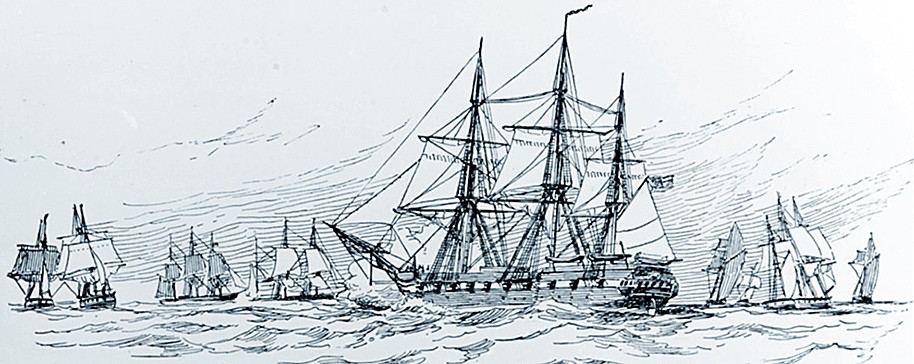
Continental frigate Raleigh
The Continental frigate Raleigh was launched on May 21, 1776, at Portsmouth, New Hampshire, with a full-length figure of Sir Walter Raleigh as a figurehead. Following the journey to France with Continental ship Alfred, Captain Thomas Thompson was relieved of command due to his failure to stop the capture on March 9, 1778, of her companion. Captain John Barry assumed command on June 24 and brought the frigate to seaworthy status. On September 27, after a chase of nearly three days departing Boston, Raleigh was engaged by the Royal Navy ships Unicorn, Experiment, and Wallace. Run ashore during the engagement, she had to be abandoned at Wooden Ball Island, Matinicus Islands, and was captured. Following repairs, she was taken into Royal Navy and served as HBMS Raleigh, taking part in the capture of Charleston, South Carolina, in May 1780. Decommissioned in June 1781, she was sold in July 1783. During her Continental Navy service, Raleigh captured or burned three Royal Navy ships.
A model of Raleigh can be found in The American Revolution and the French Alliance section at the National Museum of the U.S. Navy.
Image: NH 74525: Continental frigate Raleigh surprising the English fleet, September 1777. Artwork by Fred S. Cozzens. NHHC Photograph Collection.



